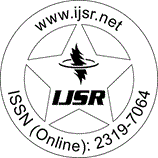Downloads: 132
Tanzania | Agricultural Engineering | Volume 5 Issue 9, September 2016 | Pages: 79 - 82
Degradation of Lambda-Cyhalothrin in Spinach (Spinacia Oleracea) & Collard Green (Brassica Oleracea) Under Tropical Conditions
Abstract: Degradation of Lambda-Cyhalothrin was studied in spinach (Spinacia oleracea) and collard green (Brassica oleracea) under tropical conditions. The two vegetables were grown at a selected area and known doses of Lambda Cyhalothrin were applied. Leaf samples were collected for fourteen days and the remaining concentration of the pesticide determined in the samples. Sample extraction followed standard procedures and analysis was done using Gas Chromatography tandem to Mass Spectroscopy (GC-MS). Faster degradation was noted in spinach with the mean degradation rate of 0.43mg/kg in 48hrs (two days) while in collard green the degradation rate of 0.38mg/kg in 48hrs (two days). The concentrations at 7th day, the day recommended by the manufacturer for observation before the consumption of vegetables, were found to be 0.1 and 0.5 mg/kg for spinach and collard green, respectively. Apparently, the concentration in collard green on the seventh day (0.5 mg/kg) was greater than the maximum residue limit (MRL) of lambda-Cyhalothrin in cabbage as set by WHO and FAO (0.3mg/kg). This concludes that degradation of pesticides can be influenced by the variation in environmental conditions. It is therefore recommended that degradation of pesticides should be studied in different environmental conditions to ascertain their valid observation time before consumption of the product.
Keywords: Lambda-Cyhalothrin, Maximum Residue Limit MRL, collard green, spinach, degradation, tropical conditions
How to Cite?: Leonia N. Henry, Jonas N. Ngowo, "Degradation of Lambda-Cyhalothrin in Spinach (Spinacia Oleracea) & Collard Green (Brassica Oleracea) Under Tropical Conditions", Volume 5 Issue 9, September 2016, International Journal of Science and Research (IJSR), Pages: 79-82, https://www.ijsr.net/getabstract.php?paperid=ART20161432, DOI: https://dx.doi.org/10.21275/ART20161432
